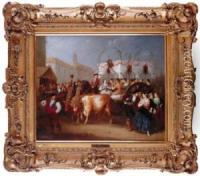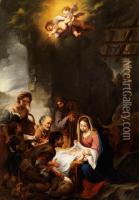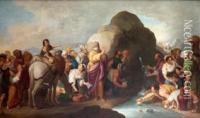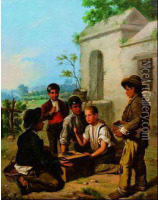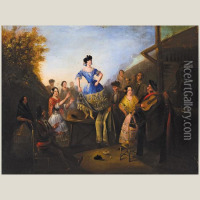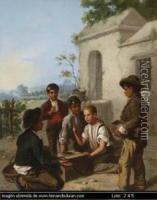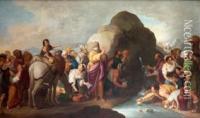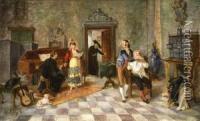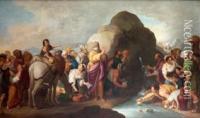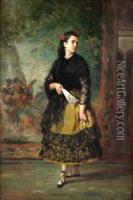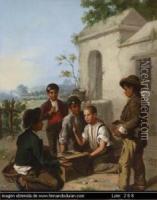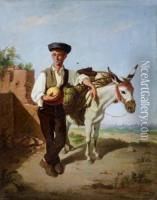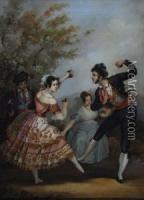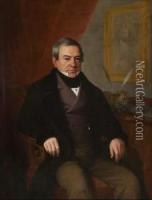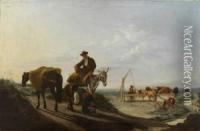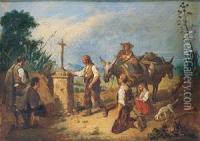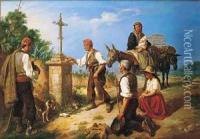Manuel Cabral Aguado Y Bejarano Paintings
Manuel Cabral Aguado Bejarano was a prominent Spanish painter known for his contributions to the genre of costumbrismo, which focuses on depicting everyday life and customs, particularly in Andalusia. Born on May 19, 1827, in Seville, Spain, he developed an early interest in art and was initially trained by his father, who was also a painter. Later, he studied at the Royal Academy of Fine Arts of Saint Elizabeth of Hungary in Seville, where he was influenced by the works of Murillo and other Baroque masters.
Bejarano's work is characterized by its detailed portrayal of traditional Andalusian scenes, including festivals, local markets, and genre scenes of the lower classes. He often depicted his subjects with a sense of realism and a keen eye for the nuances of social interaction and the environment. His use of light and color reflects the influence of the Spanish masters, while also incorporating the techniques of the Romanticism and Realism movements of his time.
Throughout his career, Cabral Aguado Bejarano exhibited his work in various venues, gaining recognition and accolades for his artistic talents. His paintings were shown at the National Exhibition of Fine Arts in Madrid, where he received several awards. His work also gained international attention, and he participated in exhibitions beyond Spain, contributing to his reputation as a skilled painter of Spanish customs and traditions.
Bejarano's legacy is preserved through his paintings, which can be found in several museums and private collections. His work provides a valuable historical record of 19th-century Spanish culture and has been studied by art historians interested in the costumbrismo movement and Andalusian art. Manuel Cabral Aguado Bejarano passed away on February 15, 1891, leaving behind a body of work that continues to be celebrated for its cultural significance and artistic merit.
